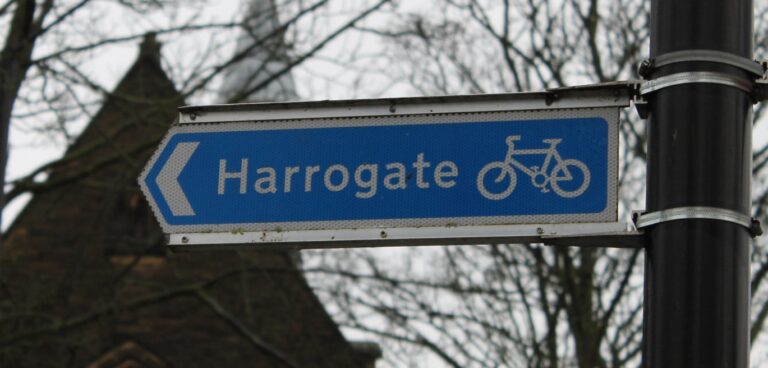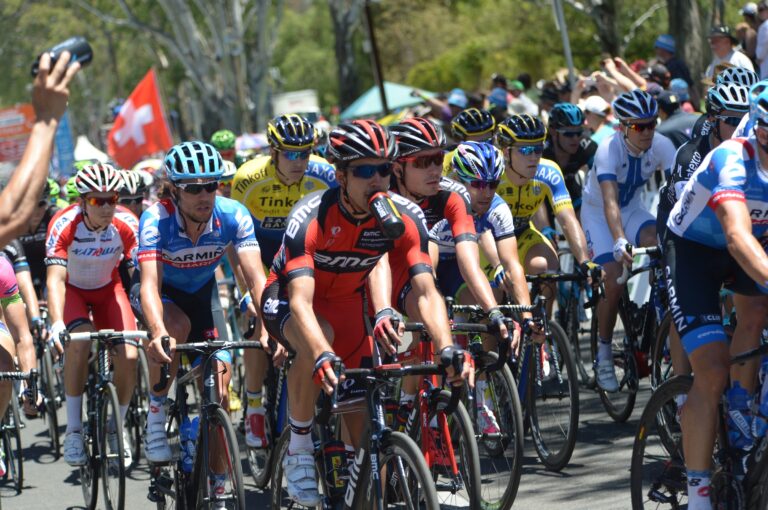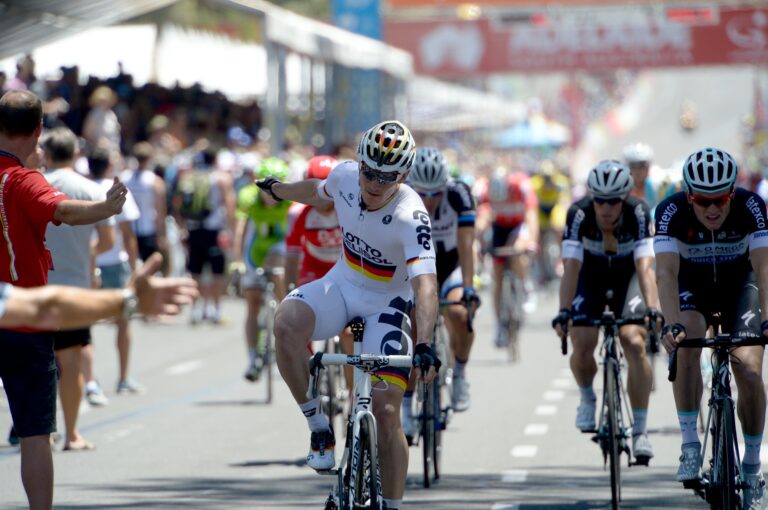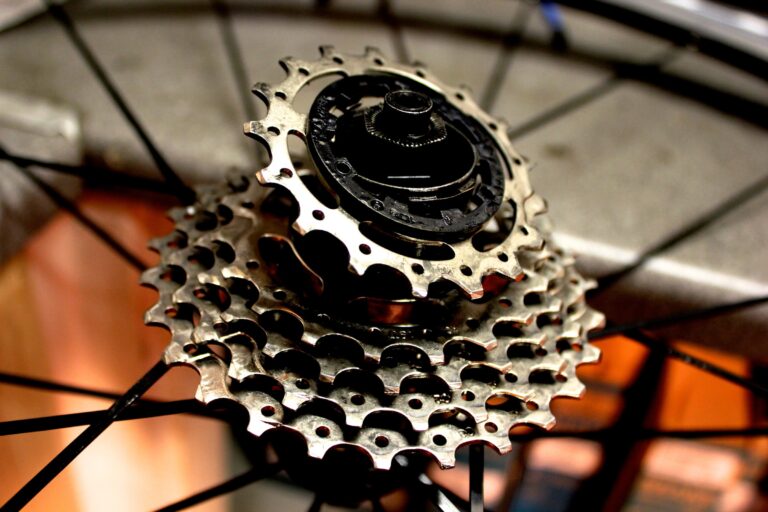The Knog Blinder Road 3 is the Aussie’s first most powerful light to date and while there’s plenty to like, it’s ultimately something of an inbetweener.
That’s because the Blinder Road 3’s maximum output, a claimed 300 lumens, is under powered to mark it out as a serious contender for riding fast on unlit roads – despite Knog’s claim – and the lack of side visibility lets down what is otherwise a powerful and versatile commuting light. The small buttons are also fiddly to use when wearing winter gloves.

It is, however, a well made, rugged and compact unit which offers an impressive range of modes via two LEDs with different beam angles. The simple, tool-free mount also means it’s quick and easy to switch between bikes.
The Blinder Road 3’s 300 lumens come via two Cree XB-D LEDs: one with a narrow 15 degree spot beam, the other a wider 22 degree beam, and they can be ran individually or together, in steady state and flashing. We went through the Blinder’s 11 modes in our first look and of the lot we especially like the ability to have one LED flashing and one constant when riding on urban (i.e. well lit) roads. It’s what we’d normally do when commuting but with two lights: one (flashing) to attract the attention of motorists, the other (constant) to help them gauge the distance between you and their vehicle.
And for that reason – the comprehensive range of modes and more than enough front-on illumination to attract the attention of drivers – the Blinder Road 3 is almost the perfect commuting light, but we wish it offered more side visibility. By more, we mean anything in the way of side visibility, because the LEDs are recessed into the unit on the current design.

So it’s good for commuting even if there’s room for improvement, but how about on night rides under cover of darkness? Knog describe the Blinder Road 3 as “a serious light that gives riders 100 per cent vision at night” but while 300 lumens is more than enough to be seen with on well-lit roads (and we rarely found ourselves reaching for the highest setting in such circumstances), it lacks firepower to see by on unlit country lanes.
Sure, 300 lumens (both LEDs in steady state mode on the maximum setting) will give you just about enough light to navigate, but it’s not nearly enough to pick out hazards at a distance and to ride confidently on unknown roads in the pitch black, particularly as the LEDs combine to throw out a wide but ultimately weak spread of light, rather than a focused beam which picks out potholes and the like. You also only get one hour of battery life on the highest setting, though away from the most powerful mode run times are, on the whole, good.
The unit itself has a polycarbonate body with an anodised aluminium face and a claimed weight of 105g. It’s a well made light which looks good, too, and takes up little room on the handlebar. The light is controlled by two buttons (the left looks after beam pattern and the right button takes care of power) but they’re small and the same colour as the light body so are unnecessarily fiddly to use on the move, particularly when wearing thick winter gloves (because they’re small) and pitch black (because they’re black). It’s also difficult to gauge what the light’s doing unless you point it up for a second to take a look or stop altogether.
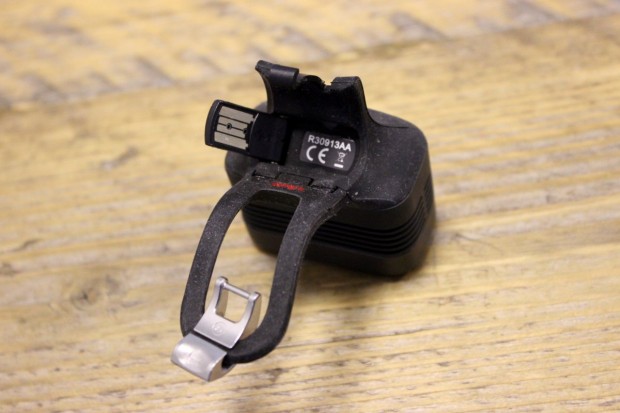
Tool-free attachment has been one of the main selling points of Knog’s previous lights and that continues here. A silicone strap wraps around the ‘bar and is secured with a stainless steel camber clip. Knog provide two straps which can be easily switched depending on the diameter of your handlebar, but the smaller of the two is all you’re likely to need, regardless of whether you have a traditional or oversized handlebar. In fact, we initially used the Blinder with the larger of the two straps but the light was sent crashing to the tarmac after a pothole jumped out of the darkness and we had to scuttle back up the road to retrieve it. The unit was completely undamaged, however, so that’s as good a test of its build quality as any, and we haven’t had any problems since switching to the smaller strap.
The Blinder is USB rechargeable but rather than plugging into your computer via a USB cable (like most lights of this ilk), there’s an integrated fold-out USB which flips out of the back of the unit. That’s all well and good, but the shape of the light means you can’t plug it directly into your computer unless you have a laptop which you can then rest on a big book or off the side of the table. Knog supply the light with a USB extension cable to solve that, but it means having it with you if you want to charge the light. We’d prefer if it was chargeable via conventional USB as we have those cables coming out of our ears, but you could buy a second extension cable if you wanted one for home and one for work.
All in all the Blinder Road 3 is close to being a very good mixed use light. It’s the type of unit you could leave on your bike all winter, to use as a powerful commuting light, particularly if your ride has short stretches of unlit road or cycle path. Improved side visibility and a redesigned button layout would complete the package as a commuting light.

It’s also an impressive (if expensive) secondary light to use in partnership with a more powerful torch on genuine night rides. In such circumstances it will provide enough light to get you home should your main light fail and can also be used as the primary light on urban roads.
However, while it has a lot going for it, namely its rugged and compact design, the comprehensive range of modes and the simple, tool-free mount, we’d recommend saving up a little more money and choosing something considerably more powerful if in the market for a light to use regularly on unlit roads.
Price: £69.99
Website: Knog
UK distributor: Moore Large


